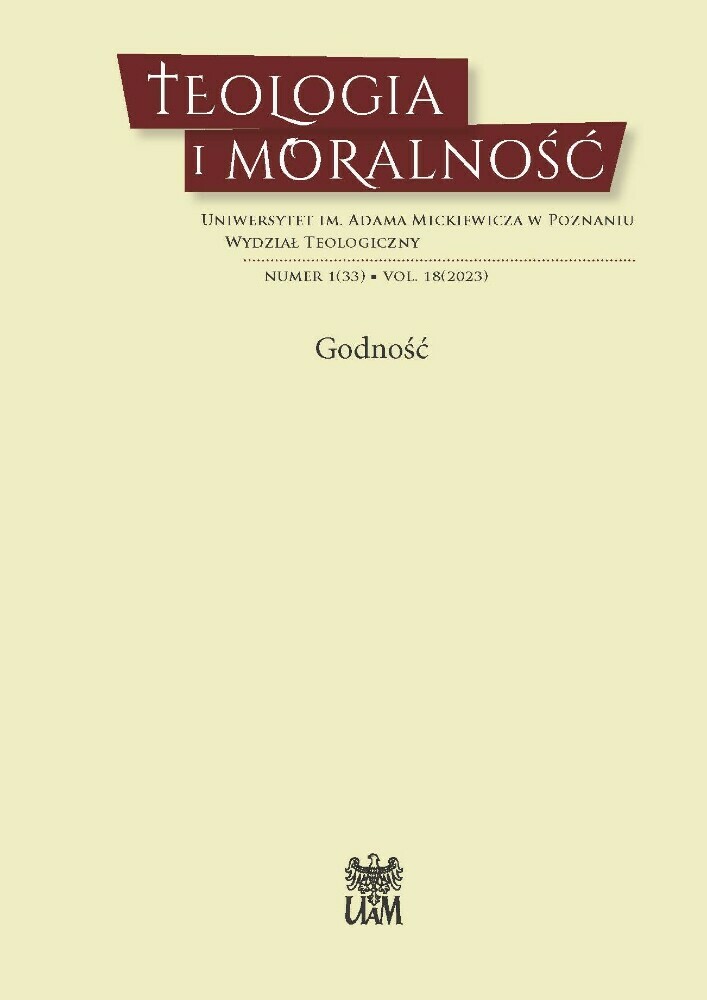Abstract
The aim of this article is to show the specifi city of the process of affirming the dignity of life of the yet unborn child and the affirmation of prenatal parenthood in a Mariological and Josephological perspective. In the piety and tradition of Christmas, the question of the affirmation of the unborn Jesus is sometimes reduced to the question of the lack of a place in the inn, which is a historical misunderstanding and diminishes the question of the affirmation of the couple’s prenatal parenthood. A different problem of affirming the dignity of the unborn Jesus and affirming the prenatal parenthood of Joseph and Mary was visible in Christianity developing in a pagan environment. In the historical an theological part the fundamental attitude of pro-family and fertility in the environment of Joseph and Mary indicated, related to the recognition of children as God’s gift, good for marriage and society. The conception and birth of a child in marriage was seen as good news for the whole community. However, the timing and manner of Jesus’ conception was a difficult experience for Joseph and Mary; both were taken aback by the situation and made the decision alone. The ultimate argument for the acceptance of prenatal parenthood by both – regardless of their feelings for each other – is the recognition of God’s will and the dignity of the yet unborn child.
References
Ambroży. 1981. Wykład Ewangelii według św. Łukasza (PL. 15, 1527-1850). W: Ojcowie Kościoła łacińscy. Teksty o Matce Bożej, red. Stanisław Napiórkowski, 69-71. Niepokalanów: Wydawnictwo Niepokalanów.
Beda Czcigodny. 1986. Homilia na zwiastowanie Najświętszej Panny, (PL 94,9-14). W: Ojcowie wspólnej wiary. Teksty o Matce Bożej, red. Stanisław Napiórkowski, 80. Niepokalanów: Wydawnictwo Niepokalanów.
Benedykt XVI. 2010a. Przemówienie podczas poświęcenia nowej fontanny w Watykanie. 5.07.2010. Salvatoris Mater 3-4 (2011). Dostęp: 20.12.2022. https://bazhum.muzhp.pl/media//files/Salvatoris_Mater/Salvatoris_Mater-r2011-t13-n3_4/Salvatoris_Mater-r2011-t13-n3_4-s332-334/Salvatoris_Mater-r2011-t13-n3_4-s332-334.pdf.
Benedykt XVI. 2010b. Rozważanie przed modlitwą „Anioł Pański” 19.12.2010. Dostęp: 20.12.2022. https://opoka.org.pl/biblioteka/W/WP/benedykt_xvi/modlitwy/ap_19122010.html.
Bourasse, Joannes. 1866. Summa aurea de laudibus Beatissimae Virginis Mariae dei genetrices sine labe conceptae, t. II, Paris: Lutetiae, 1175. Dostęp: 20.12.2022. https://archive.org/details/summaaureadelaud08bour/page/n713/mode/2up.
Corbeiensis, Ratbertus. 1849. Fragmentum de partu Virginis IX. Dostęp: 20.12.2022. https://la.wikisource.org/wiki/Fragmentum_de_partu_Virginis.
Gołębiowski, Michał. 2015. Małżeństwo Józefa i Maryi w literaturze i piśmiennictwie staropolskim doby potrydenckiej. Kraków: Collegium Columbinum.
Gryglewicz, Franciszek. 1974. Ewangelia według św. Łukasza. Wstęp – przekład z oryginału – komentarz. Warszawa: Pallotinum.
Jan Paweł II. 1987. Encyklika „Redemptoris Mater”. O błogosławionej Dziewicy w życiu pielgrzymującego Kościoła.
Jan Paweł II. 2008. Mężczyzną i niewiastą stworzył ich. Lublin: Wydawnictwo KUL.
Keener, Craig. 2000. Komentarz historyczno-kulturowy do Nowego Testamentu, tłum. Zbigniew Kościuk. Warszawa: Vocatio.
Langkammer, Hugolin. 1989. Apokryfy Nowego Testamentu, tłum. Hugolin Langkammer. Katowice: Księgarnia św. Jacka.
Linde, Samuel. 1812. Słownik języka polskiego, cz. 3. Warszawa: XX Pijarzy.
Mazurkiewicz, Roman. 2000. Teksty o Matce Bożej. Polskie średniowiecze. Niepokalanów: Wydawnictwo Ojców Franciszkanów.
Mazurkiewicz, Roman. 2011. Z dawnej literatury maryjnej. Zarysy i zbliżenia. Kraków: Wydawnictwo Naukowe Uniwersytetu Pedagogicznego.
Oficjum zwiastowania Maryi Pannie. 1991. W: Prawosławie. Teksty o Matce Bożej, cz. 1, red. Stanisław Napiórkowski, 24-25. Niepokalanów: Wydawnictwo Niepokalanów.
Packer, James i Tenney, Merrill. 1980. Słownik tła Biblii, tłum. Zbigniew Kościuk. Warszawa: Vocatio.
Piotr Chryzolog. 1981. Homilia na zwiastowanie Najświętszej Panny (2), (PL. 52,579-582). W: Ojcowie Kościoła łacińscy. Teksty o Matce Bożej, red. Stanisław Napiórkowski, 134. Niepokalanów: Wydawnictwo Niepokalanów.
Pismo Święte Nowego Testamentu i Psalmy. Najnowszy przekład z języków oryginalnych z komentarzem. Warszawa: Edycja Świętego Pawła.
Starowieyski, Marek. 2017. Apokryfy Nowego Testamentu. Ewangelie apokryficzne, t. 1, cz. 1. Kraków: Wydawnictwo WAM.
Zimorowic, Józef. 2013. Iesus, Maria, Ioseph. Jezus, Maria, Józef. Lublin: Wydawnictwo UMCS.
License
Copyright (c) 2023 Monika Waluś

This work is licensed under a Creative Commons Attribution-NoDerivatives 4.0 International License.

